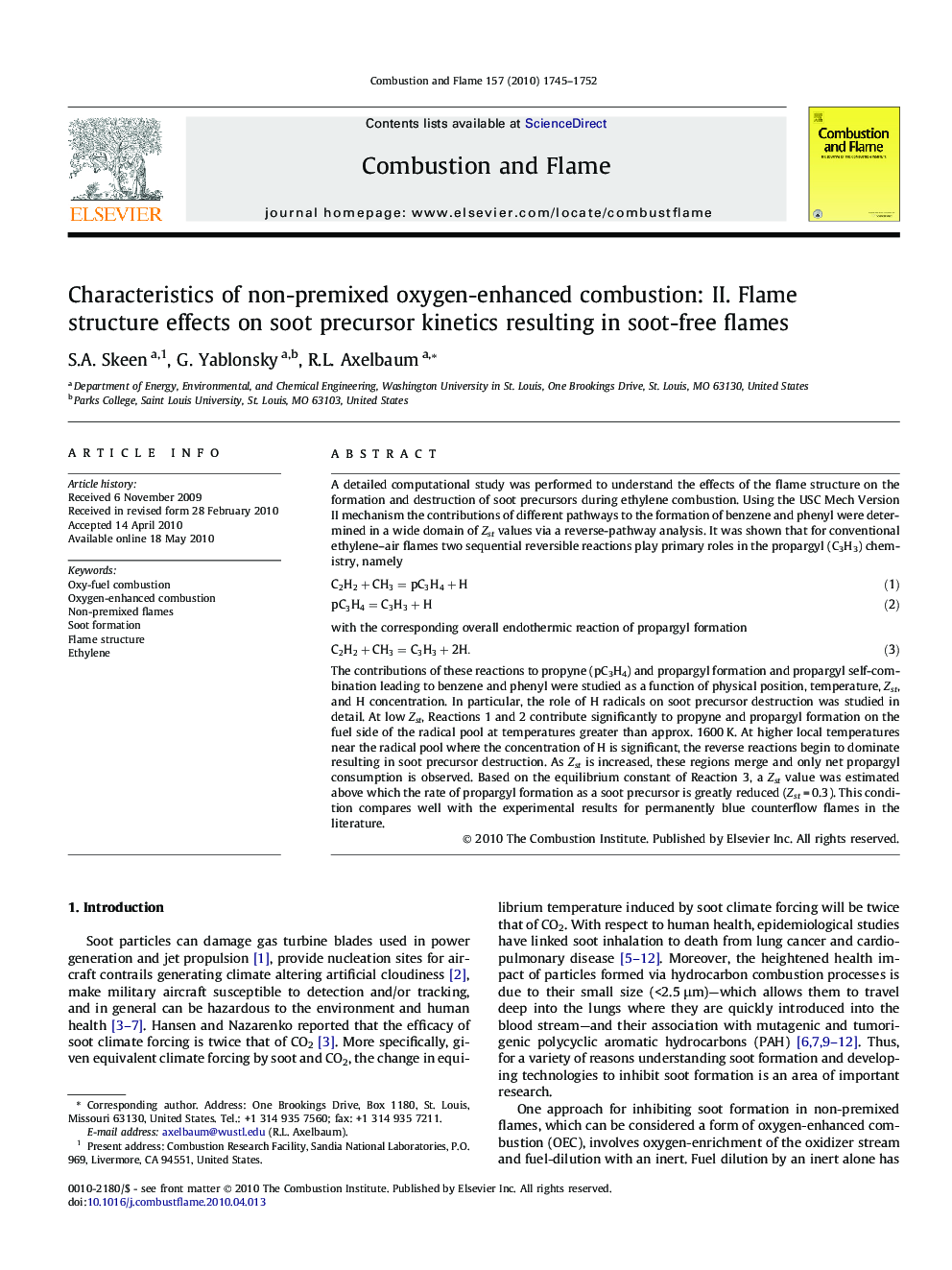| کد مقاله | کد نشریه | سال انتشار | مقاله انگلیسی | نسخه تمام متن |
|---|---|---|---|---|
| 169369 | 457994 | 2010 | 8 صفحه PDF | دانلود رایگان |

A detailed computational study was performed to understand the effects of the flame structure on the formation and destruction of soot precursors during ethylene combustion. Using the USC Mech Version II mechanism the contributions of different pathways to the formation of benzene and phenyl were determined in a wide domain of Zst values via a reverse-pathway analysis. It was shown that for conventional ethylene–air flames two sequential reversible reactions play primary roles in the propargyl (C3H3) chemistry, namelyequation(1)C2H2+CH3=pC3H4+HC2H2+CH3=pC3H4+Hequation(2)pC3H4=C3H3+HpC3H4=C3H3+Hwith the corresponding overall endothermic reaction of propargyl formationequation(3)C2H2+CH3=C3H3+2H.C2H2+CH3=C3H3+2H.The contributions of these reactions to propyne (pC3H4) and propargyl formation and propargyl self-combination leading to benzene and phenyl were studied as a function of physical position, temperature, Zst, and H concentration. In particular, the role of H radicals on soot precursor destruction was studied in detail. At low Zst, Reactions 1 and 2 contribute significantly to propyne and propargyl formation on the fuel side of the radical pool at temperatures greater than approx. 1600 K. At higher local temperatures near the radical pool where the concentration of H is significant, the reverse reactions begin to dominate resulting in soot precursor destruction. As Zst is increased, these regions merge and only net propargyl consumption is observed. Based on the equilibrium constant of Reaction 3, a Zst value was estimated above which the rate of propargyl formation as a soot precursor is greatly reduced (Zst = 0.3). This condition compares well with the experimental results for permanently blue counterflow flames in the literature.
Journal: Combustion and Flame - Volume 157, Issue 9, September 2010, Pages 1745–1752